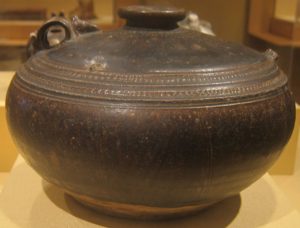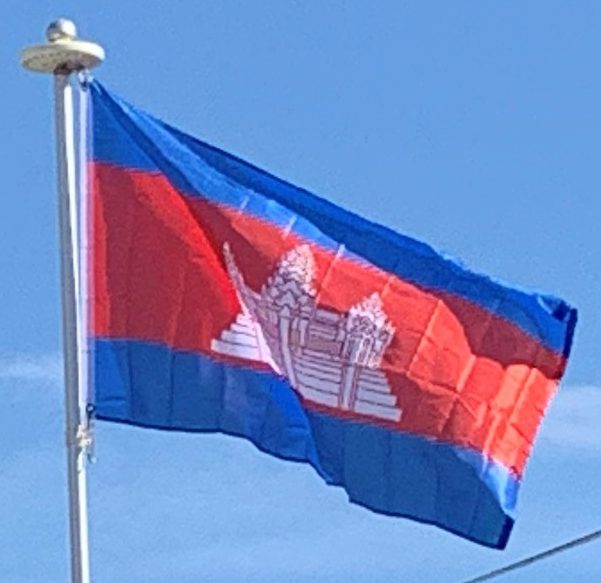While per capita income remains low compared to most neighboring countries, Cambodia has one of the fastest growing economies in Asia, with growth averaging 7.6 percent over the last decade. Agriculture remains the dominant economic sector, with strong growth in textiles, construction, garments and tourism leading to increased foreign investment and international trade. The US World Justice Project’s 2015 Rule of Law Index ranked Cambodia 76 out of 102 countries, similar to other countries in the region.
History:
Pre-History:
There exists sparse evidence for a Pleistocene human occupation of present-day Cambodia, which includes quartz and quartzite pebble tools found in terraces along the Mekong River, in Stung Treng and Kratié provinces, and in Kampot Province, although their dating is unreliable. Some slight archaeological evidence shows communities of hunter-gatherers inhabited the region during Holocene: the most ancient archaeological discovery site in Cambodia is considered to be the cave of L’aang Spean, in Battambang Province, which belongs to the Hoabinhian period. Excavations in its lower layers produced a series of radiocarbon dates around 6000 BC. Upper layers in the same site gave evidence of transition to Neolithic, containing the earliest dated earthenware ceramics in Cambodia.

Archaeological records for the period between Holocene and Iron Age remain equally limited. A pivotal event in Cambodian prehistory was the slow penetration of the first rice farmers from the north, which began in the late 3rd millennium BC. The most curious prehistoric evidence in Cambodia are the various “circular earthworks” discovered in the red soils near Memot and in the adjacent region of Vietnam in the latter 1950s. Their function and age are still debated, but some of them possibly date from 2nd millennium BC.
Iron was worked by about 500 BC, with supporting evidence coming from the Khorat Plateau, in modern-day Thailand. Also, among the artifacts from the Iron Age, glass beads are important evidence. Different kinds of glass beads recovered from several sites across Cambodia, such as the Phum Snay site in northwest and the Prohear site in southeast, show that there were two main trading networks at the time. The two networks were separated by time and space, which indicate that there was a shift from one network to the other at about 2nd–4th century AD, probably with changes in socio-political powers.
Pre-Angkorian and Angkorian Era:
During the 3rd, 4th, and 5th centuries, the Indianised states of Funan and its successor, Chenla, coalesced in present-day Cambodia and southwestern Vietnam. For more than 2,000 years, what was to become Cambodia absorbed influences from India, passing them on to other Southeast Asian civilisations that are now Thailand and Laos. Little else is known for certain of these polities, however Chinese chronicles and tribute records do make mention of them. It is believed that the territory of Funan may have held the port known to Alexandrian geographer Claudius Ptolemy as “Kattigara“. The Chinese chronicles suggest that after Jayavarman I of Chenla died around 690, turmoil ensued which resulted in division of the kingdom into Land Chenla and Water Chenla which was loosely ruled by weak princes under the dominion of Java.
